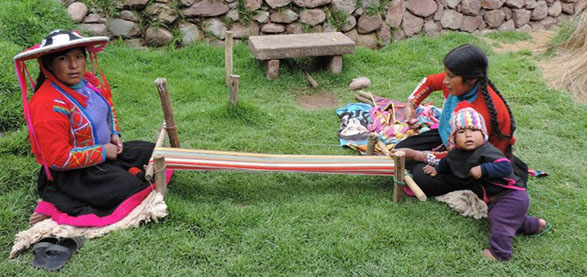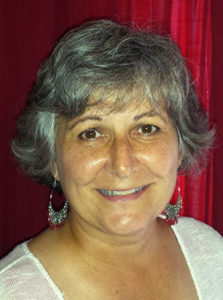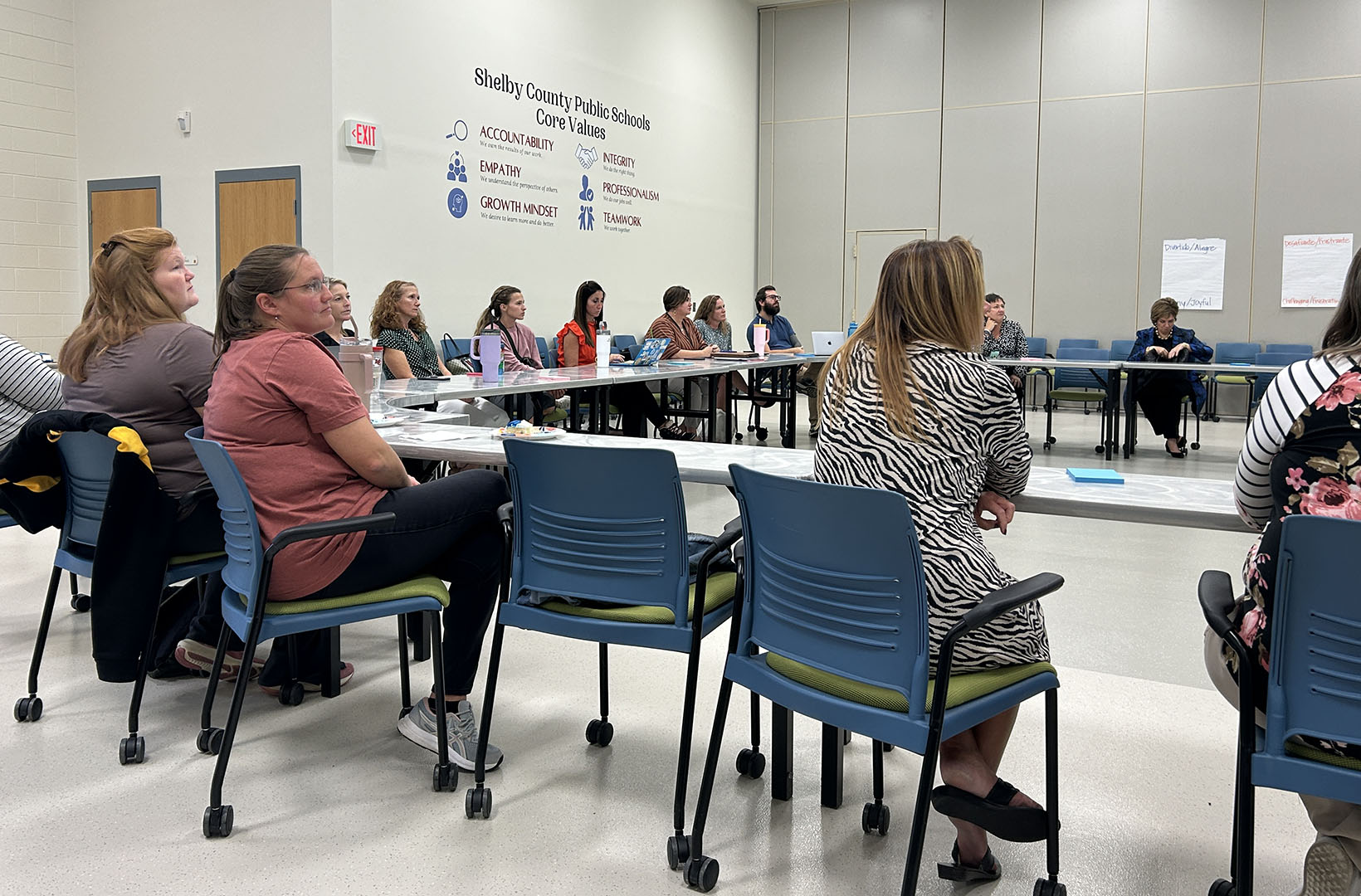
Weavers work on a piece of cloth in Cuzco, Peru. Retired Pulaski County High School teacher Esther Lee Barron says teachers need to help their students see beyond their own culture and race.
Submitted photo by Daudi and Cathlene Strong
By Esther Lee Barron
estherleebarron@gmail.com
When the first meeting of the World Language Program Review Committee convened in 2015, I didn’t have any particular goal. After 22 years of teaching Spanish at Pulaski County High School, completion of the document twice before had led to little actual change. I wondered what would happen this year.

Esther Lee Barron
One thing that struck me was a greater emphasis placed on a label – Global Competencies. The implication was that teachers should be able to explain what global competency meant to students and that skills learned in the classroom could be transported to a broader world. What no one seemed to be able to deliver was what it meant to be globally competent in every culture, country and setting. Were teachers now expected to benchmark students’ progress and how?
The meetings left me with an internal discontentment. Our group was no closer to understanding the rubric’s expectations.
Out of the serendipitous blue, a definition of global competency gelled in my own mind during Thanksgiving break. In a living illustration, a family reunion brought together four generations of international transients to whom I am irrevocably connected. Three short hours together led to a personal epiphany that gave rise to my volunteering to facilitate a professional development session for the Pulaski County High School faculty. My colleagues needed a broader vision that I had actually lived.
In April, I gave a presentation using my life and examples from it to articulate what global competency means, how it is obtained, then how exposure to the idea can be taken to the classroom to broaden the perspective of mono-cultural kids. The benchmark … well, that may be an impossible goal.
I grew up as the child of missionaries in Kenya, Africa, where I attended an American boarding school from the 1st grade through the end of my sophomore year. High school graduation and college were completed here in the U.S.
Born in Kenya, I could have been a Kenyan. Sometimes feeling more African than American, I wondered how different life would be if I were dark in color. I had to declare my choice of citizenship when I was 18. Neither completely here nor there, I was a third-culture kid – a bubble culture in between two.
As a young adult in my early 20s, I went with the same mission board to Bolivia, South America. En route, I was sent to Costa Rica, Central America, to learn Spanish. After teaching art in Bolivia for two years, I returned to the U.S. and obtained my teaching certification in Spanish. I taught at Pulaski County High School for 22 years and retired at the end of May 2016.
That background carried into the presentation as I shared anecdotes about the role that perception plays in labeling one as “globally competent.” For example, the perception of circumstantial etiquette could be that of a British-influenced American mother compared to that of a Costa Rican host mother. I showed a video clip of the boarding school I had attended in Kenya. I gave illustrations of how global competence is formed over time through the complexities of one person’s life – humor, stories about the loss and gain of a life that is perpetually on the move, and encountering the edge of identity, where labels and national affiliations no longer apply. It is the weaving of a life’s journey.
How does one bring a global understanding to the classroom? A short video clip by Stacie Berdan – an author, international careers expert and global marketing consultant – introduces the issue, “Developing a Global Mindset.” For more stunning statistical comparisons, watch her “Go Global! video here.
Globalization is upon us and our students will be isolated from it unless they join the larger number of ex-patriots – our military, businessmen and women, foreign exchange students, missionaries and international contractors – that fuel it. The United States has traditionally been mono-cultural in language and mindset, but now more than ever, our nation is rapidly diversifying. Better stated, we are more aware than ever that our cultural diversity is escalating and understanding reaches beyond race into personal values.
Teachers need to broaden their own perspective, foster international curiosity and model it in the classroom so students can embrace not just the globalization, but also the responsibility of social justice that comes with that knowledge. As a nation, we must compete economically and intellectually – not just in product – but also in person. That development runs deeper than electronic connectivity.
As I faced my colleagues at Pulaski County High School, I wanted to keep a positive edge since the school had improved from a Persistently Low Achieving label ranking in 2011 to the top 3 percent in 2015. However, here was yet another place to improve.
During the professional development session I led, teachers interacted in small groups, sharing ideas that had stimulated their own lives to action, locally and internationally, that could be used in the classroom to enlarge their students’ vision. As the session finished, I felt confident that I had given an inspiring delivery, but I never imagined how my colleagues would respond. In retrospect, I never saw them as those that needed the challenge.
They loved it! In an instant, I felt renewed validity for the discipline of learning a language, but also that global competency was acknowledged as “cutting edge.” The discussion in the hallways about the session went beyond pragmatics, as though teachers were dreaming of contacting a world beyond. At least three said they gleaned ideas that were immediately applicable to their classes, one having to do with the seniors leaving their familiar place, another spoke of getting ideas for a book he was writing. One participant encouraged me to publish my ideas with an educational purpose. Others spoke of how their perspective had been broadened through stories, photos and international artifacts.
It was very gratifying to me as I connected with colleagues on both a personal and professional level. The feedback from all sides assured me that what I had shared resonated with those who had served in the military, those who were mothers and those who had offered themselves in mission work.
I believe that Kentucky students need a broader global perspective in order to meet the demands of a more connected and wired world. Let’s help them by beginning with us!
Esther Lee Barron is a third-generation globe-trotting, Spanish-speaking, tri-cultural teacher. She has a bachelor’s degree in fine arts, a master’s degree in the teaching of languages and was a Spanish teacher for 22 years at Pulaski County High School.




The nicest and most intelligent neighbor we could have ever hoped for and enjoyed her company!
Well said! I hope your presentation continues to bear much fruit.
Thanks for sharing…. heart felt and a woven experience. My imagination went soaring!
Way to go! Thank you for sharing your epiphany.
¡Muy bien hecho! Loved it, very well done…it’s a start!